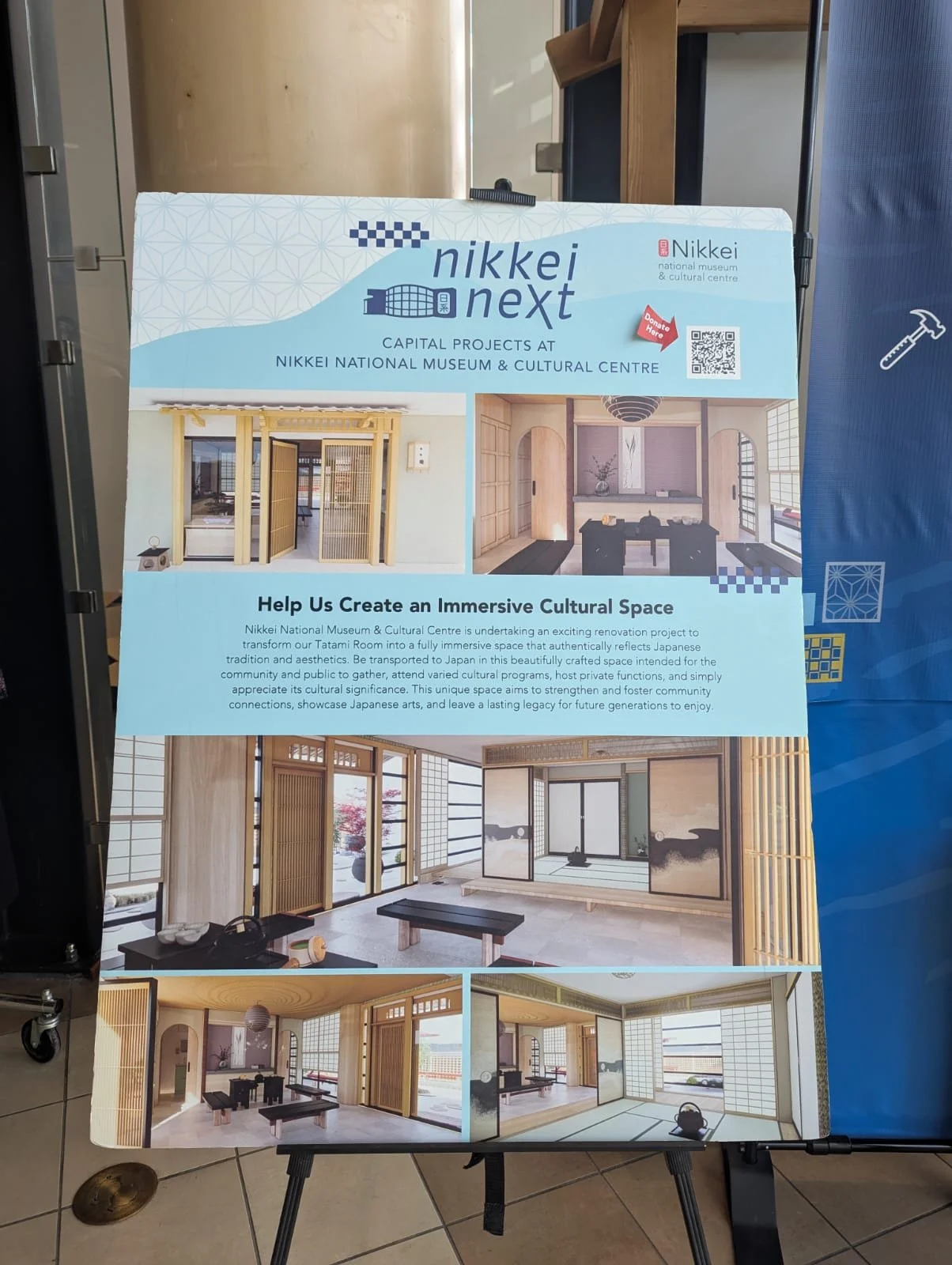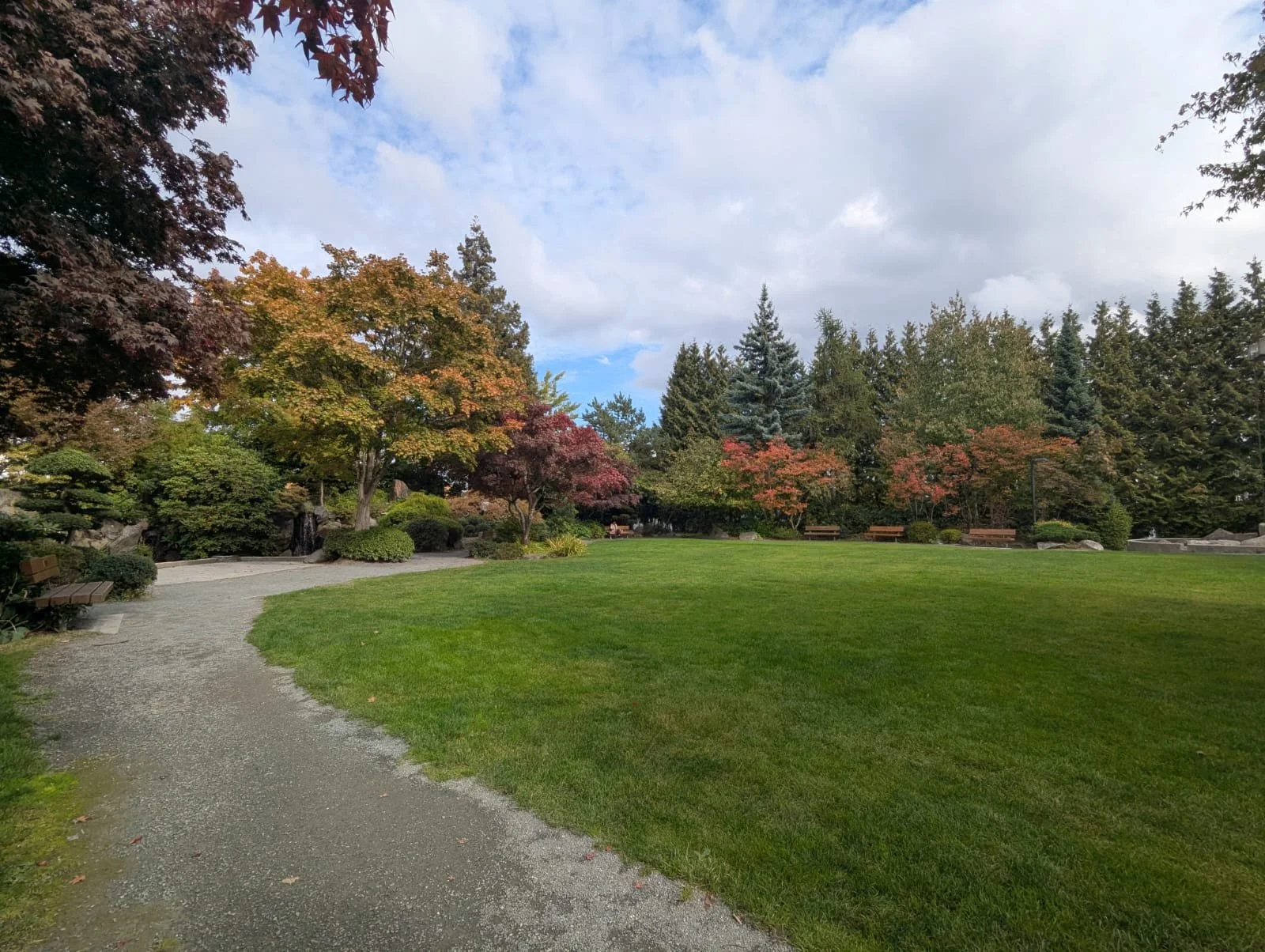Kintsugi, Japvarian, and Sashimi
Note: This blog was written while listening to the album “Kintsugi” by Death Cab For Cutie
I was 7 years old when I first tried sushi. My first stepdad had lived in Japan for a number of years before meeting my mom, and took us to a sushi restaurant on the corner of Broadway and Hemlock that is now home to a laser eye centre.
I didn’t even know how to use chopsticks yet. But the feeling was obvious: it was love at first bite.
Ever since that fateful day in 1997, sushi has been a constant presence in my life. Not a week goes by that I don’t order Japanese food in some form or another: chicken katsu, chirashi don, and salmon belly sashimi are among my many, many vices.
But with over 600 sushi restaurants in Metro Vancouver, I am not alone when it comes to my visceral, obsessive love of raw fish on vinegared rice.
Kelly and her brother Louis, both lifelong sushi lovers themselves, took over Pine Sushi Square in North Vancouver in February 2022. Endearingly called the “fish man” by his sister, Louis really is the man. Presenting me a plate of delicately and carefully laid out pieces of sushi - with offerings including aburi salmon, chopped scallop, and toro nigiri - I was caught off-guard with how absolutely, undeniably, incredibly delicious everything was.
The reason why I was so shocked?
I was in a food court.
The Fish Man at work
Located in North Vancouver’s Capilano Mall, Pine Sushi Square’s menu is more akin to a restaurant than a food court. With a commitment to quality and the principle of “fresh” sushi in mind, their first order of business when taking over the space was to immediately throw out the storefront cooler that carried those ready-to-go bento boxes more commonly associated with food courts.
Don’t get me wrong. There’s a time and a place for a California and dynamite roll combo (what they call the “classic combo”.) But Kelly and Louis wanted to challenge the idea of what “food court” sushi could actually look like.
“One of the reasons I love sushi is that there’s no set boundaries,” Kelly shares. “You can literally do whatever you want in the so-called category of sushi. Sushi, the term itself, is such a broad word - it can mean nigiri, it can mean sashimi, it can mean so many different things. It’s never boring. You can always do something, you can always change it up, you can always add something or take something away and it would give you a whole new flavour.”
While changing things up can always feel a bit risky, it’s been paying off for them - literally. Since taking over, they have tripled the revenue of the original business while still keeping prices relatively competitive for the area.
Also offering sushi workshops, hot school lunches, and catering services, growth is top of mind for Kelly and Louis, with their eyes set on opening a restaurant location in the future.
On top of being the “Fish Man”, Louis also has experience in both hairdressing and architecture. These seemingly disparate careers make sense - creativity and style are paramount in those industries, after all. Louis has a vision for their dream restaurant includes plants, many, many plants, evoking the feeling of eating in nature, a space that is safe, comfortable, and clean.
David Longpre, an architect with his own practice Longpre Architecture, is also no stranger to Japanese culture. Having lived in Tokyo for six months, as well as having arguably the cutest Shiba Inu in the entire city, Niko, several of his projects are influenced by Japanese and Scandinavian techniques in a style that is commonly referred to as “Japandi”.
According to The Spruce, Japandi is “the fusion of traditional Japanese and Scandinavian styles, both centered around simplicity, natural elements, and comfort”.
And while David’s work may look “Japandi” at first glance, he prefers to use another term he coined: “Japvarian”.
“Japandi has been milked dry, beige minimalism with a potted fern in the corner. It was never as warm as people pretended it to be,” he shares.
For David, the difference between “Japandi” and “Japvarian” goes beyond surface aesthetics and into something richer, something that feels rooted in story.
“The real update is Japavarian: Japanese restraint meeting Bavarian fairytales. Imagine shoji-like lightness layered with heavy timber beams, iron hardware, and the charm of a refined beer hall. It’s minimal, but not sterile, it has folklore, narrative, and depth.”
Architect: Longpre Architecture | Builder: Theorem Developments
As "Everything's a Ceiling” by Death Cab For Cutie plays in the background, I imagine the vision of Kelly and Louis’ restaurant alongside David’s reimagining of Japandi: and I so very, very badly want to eat some sushi in this fictitious, luscious, wondrous place.
Long before David’s time however, Frank Kamiya was an architect who embodied his culture into every facet of his work. He played an integral role in bringing the Nikkei National Museum & Cultural Centre to life, working tirelessly to preserve the history of Japanese people in BC. Today, he volunteers his time supporting the Nikkei Next roof replacement project.
Nikkei Next is a capital projects campaign that was started with the simple but powerful purpose of revitalizing Nikkei Centre. The fund will be invested towards critical infrastructure upgrades, reimagining shared spaces, and creating new immersive cultural experiences. Other projects include HVAC system upgrades, revitalizing the outdoor gardens, and the creation of the Chashitsu Tea Room.
Honouring the Past, Building the Future Together
Karah Goshinmon Foster, Executive Director at Nikkei National Museum & Cultural Centre, shared their thoughts on what the Nikkei Next campaign means not only for the Japanese community, but for Metro Vancouver as a whole:
“The Nikkei Next campaign will provide the opportunity for this place to thrive into the future. It is not only the building itself, but what happens within the walls and under the roof. It means securing the preservation of our museum collection, one that we protect, preserve, and conserve for future generations,” she shares. “With this project, there’s new opportunities to enhance spaces for the next generation of people, of all backgrounds, who can come here to learn about Japanese Canadian history and heritage.”
As I approached both the end of this blog and the end of the Death Cab For Cutie album, it comes to me with striking clarity how these stories - Kelly and Louis, David, and Frank and Karah - all come together.
Kind of like the way a sushi roll comes together, or the Japanese art of Kintsugi, the 500-year-old tradition of repairing broken ceramics with natural Urushi lacquer and powdered gold: with balance, intention, respect, care, and love for both art and culture.
Almost three decades after having my first bite of Japanese food, I’m more in love with sushi than ever. It’s a love affair that’s far from over.
Yet perhaps after all these years, it’s only just getting started.
Donate to Nikkei Next here:




